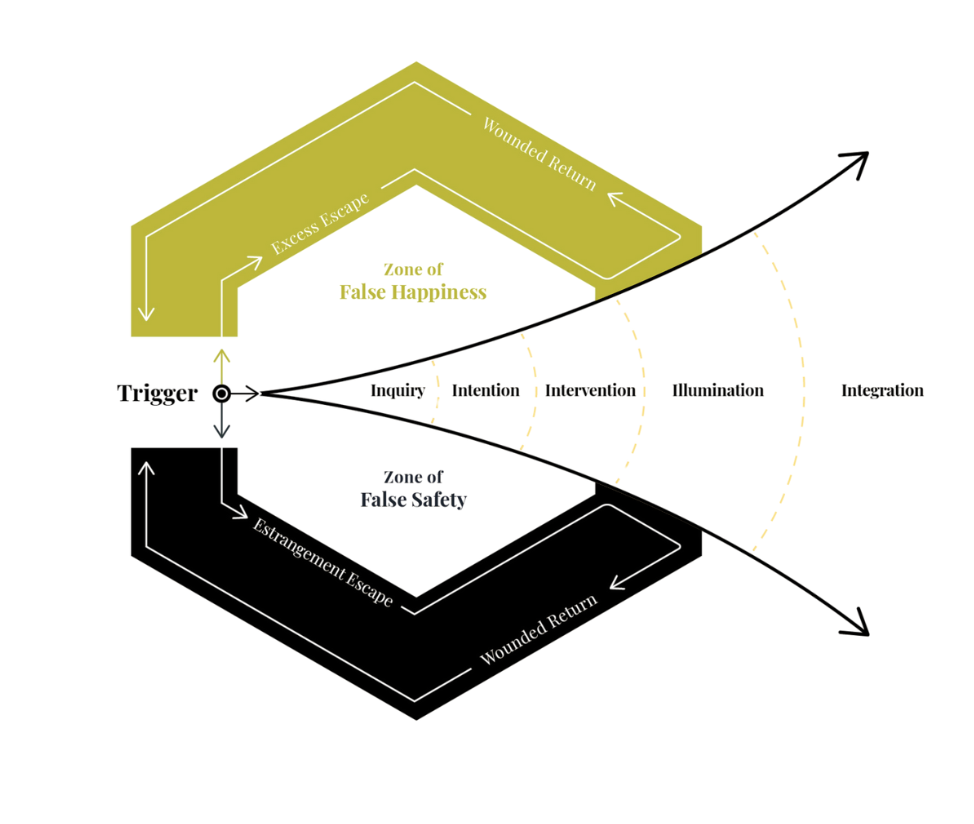
The EXPANDED Method:
NeuroBioBehavioral Healing
“Too often, I watch clients experience shame, guilt, anxiety or depression due to behaviors we are all socially and biologically programmed to exhibit. When we fully integrate our knowledge of the brain and body, trauma responses, the environmental influence, and our patterns and subconscious beliefs, we can acknowledge where they came from, release associated fear and anxiety from the root, and move into a healthier state of resilience, empowerment and wellbeing.”
A Modern, Integrative Approach to Health + Healing
Mental health is reaching new heights as ketamine-assisted therapy and cutting edge neuroscience-supported treatments advance in the West. Never before have we known so much about the intersections of our behavior, beliefs and past experiences, genetics, biology, and energetics; however, while these advancements are exciting, high-quality mental health services are often out of reach due to a lag in educational programs and current healthcare practices in the U.S.
After more than two decades of dedicated research, clinical practice, and transformative work in human behavior and psychological wellness, Gianna developed the EXPANDED Method—a revolutionary approach that goes beyond traditional therapeutic models. Drawn from her studies and experiences in behavioral science, neuroscience, Buddhist psychology, psychedelic/ketamine-assisted therapy and even quantum physics, this tangible framework empowers individuals as students and mindful observers of their own minds and bodies.
The EXPANDED Method can be viewed as a tangible science — a neurobiobehavioral framework that reaches beyond traditional mental health models to provide an integrative experience, warmly welcoming individuals of all backgrounds and beliefs.
Using an advanced model with an individual’s unique desires, stories, preferences and focus as the driving force, many individuals report receiving benefits beyond previous traditional talk therapy experiences.
Why Does It Work?
The Brain + Behavior Connection
Our brains are wired to protect us through biological stress responses (i.e., fight, flight, freeze, or fawn). While these reactions served us well (and kept us alive) in the past, they often misfire in modern life, treating everyday stressors like toxic bosses, relationship conflicts, or limiting beliefs as life-threatening dangers (i.e., being chased by a cheetah).
Our bodies and minds react according to their programming for danger and threat, trapping us in rumination, anxiety, negativity, a preference for sameness/risk aversion, and so on. Many patients with early childhood or even adulthood trauma may feel trapped in these states constantly.
This can lead to two common avoidance patterns:
• Excess Escape: Overeating, overspending, or other forms of over-consumption.
• Estrangement Escape: Withdrawing, numbing with substances, or distracting ourselves.
Because these avoidance behaviors, a phenomena called experiential avoidance, work in the short term, these reactions become habitual, allowing us to avoid pain, discomfort or other undesired states or events. However, in the long run, experiential avoidance is shown to maintain or exacerbate psychological stress.
The key to sustainable, transformational change is to go through discomfort, not around.
How Does It Work?
Going Around vs. Going Through
In many individuals facing mental health challenges, one of two routes are taken to avoid trauma, pain, discomfort or even the act of making small changes : the Excess Escape or the Estrangement Escape.
These escape routes function to avoid undesired thoughts, feelings or events in the hope that relief and peace will soon follow (i.e., illumination or integration). In this attempt to avoid pain, individuals engage in behaviors that, initially, bring a false or real sense of peace and relief, such as: overeating, making unnecessary purchases, inertia, rumination, negativity, sedentary behavior, staying busy, removing themselves from social settings, scrolling, etc.
This avoidance can result in:
depression
fatigue
high reactivity
irritability/frustration
anxiety
chronic pain
poor/unhealthy choices
Research shows that we can become so accustomed to these stress-based states that our brains may become addicted to stress hormones, keeping us locked in this reactionary state. At best, we are returned back to where we started when we realize our bypassing (avoidance) did not provide a sustainable fix or healing (the Wounded Return).




